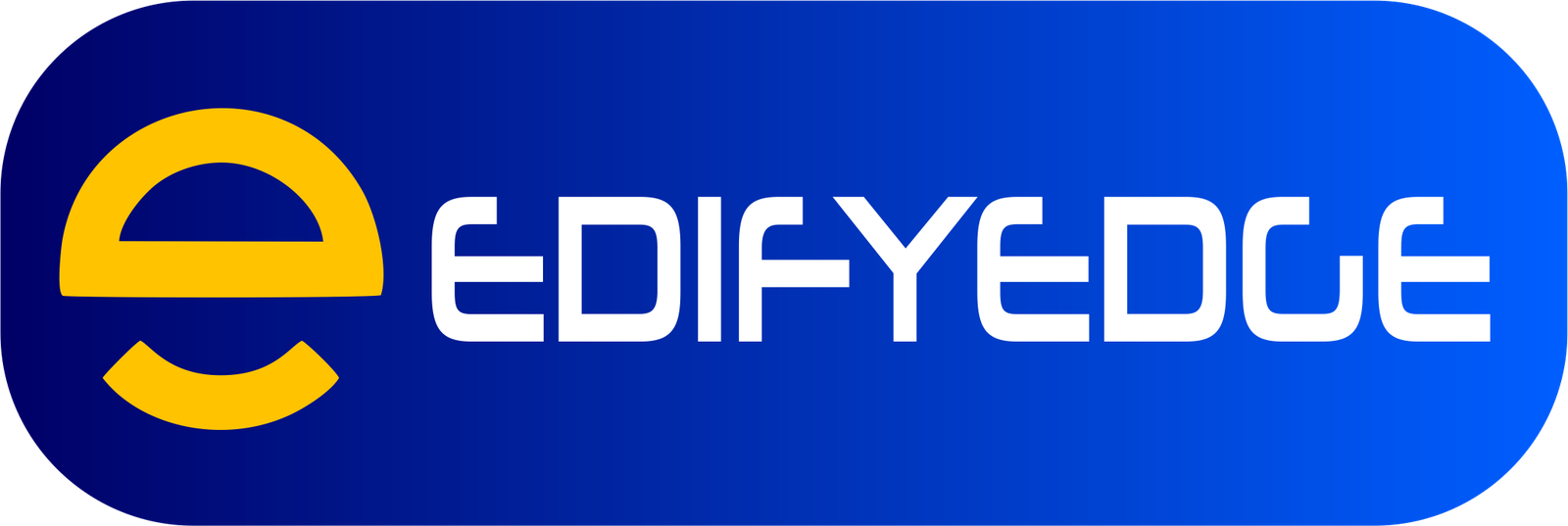What is a Home Renovation Loan?
A home renovation loan is a type of financing specifically designed to help homeowners fund home improvement projects, repairs, or renovations. These loans allow you to borrow money against the equity you’ve built up in your home, providing the funds needed to update, repair, or enhance your living space.
The primary purpose of a home renovation loan is to provide homeowners with the financial resources to invest in their properties, whether it’s for necessary repairs, energy-efficient upgrades, aesthetic improvements, or adding more living space. These loans can be used for a wide range of projects, such as kitchen or bathroom remodels, roof replacements, energy-efficient window installations, room additions, basement finishes, and more.
There are several types of home renovation loans available, including:
-
Home Equity Loan: A lump-sum loan that uses your home’s equity as collateral. You receive the entire loan amount upfront and make fixed monthly payments over a set term.
-
Home Equity Line of Credit (HELOC): A revolving line of credit secured by your home’s equity. You can borrow as needed, up to the approved limit, and make interest-only payments during the draw period.
-
Cash-out Refinance: Refinancing your existing mortgage for a higher amount than you currently owe, allowing you to pocket the difference in cash to use for renovations.
-
FHA 203(k) Loan: A specialized loan program backed by the Federal Housing Administration (FHA) that combines the mortgage and renovation costs into a single loan.
-
Construction Loan: A short-term loan designed to finance the construction or significant renovation of a home, which is typically converted into a traditional mortgage once the project is complete.
Each type of home renovation loan has its own advantages, requirements, and terms, so it’s essential to research and choose the option that best fits your specific needs and financial situation.
When to Consider a Home Renovation Loan
Homeowners may consider a home renovation loan for various reasons, including updating outdated spaces, making necessary repairs, or adding square footage to accommodate growing needs. Here are some common scenarios where a home renovation loan can be beneficial:
Updating Outdated Spaces
Over time, homes can start to feel outdated and may require renovations to modernize and improve functionality. This could involve remodeling kitchens, bathrooms, or living areas with new appliances, fixtures, and finishes. A home renovation loan can provide the funds needed to transform these spaces and enhance the overall aesthetic and comfort of your home.
Making Necessary Repairs
Older homes may require significant repairs to address structural issues, plumbing problems, or electrical upgrades. These types of renovations are essential for maintaining the integrity and safety of your home. A home renovation loan can cover the costs of these critical repairs, ensuring your property remains in good condition and up to code.
Adding Square Footage
As families grow or lifestyle needs change, homeowners may require additional living space. Home renovation loans can finance additions such as extra bedrooms, home offices, or expansions to existing living areas. These projects can increase the functionality and value of your home while providing the space you need.
Pros of Home Renovation Loans
- Access to funds for home improvements without tapping into savings or investments
- Potential tax benefits for certain renovation projects
- Increased home value and improved living conditions
- Ability to finance renovations over an extended period
Cons of Home Renovation Loans
- Additional debt and interest payments
- Potential for cost overruns or unexpected expenses
- Risk of owing more than the home’s value if renovations do not increase home value as expected
- Strict lender requirements and approval process
Ultimately, whether a home renovation loan is the right choice depends on your specific renovation goals, financial situation, and long-term plans for the property. Carefully weighing the pros and cons can help you make an informed decision.
Loan Requirements and Qualifications
To qualify for a home renovation loan, lenders typically have specific requirements that borrowers must meet. These include:
Credit Score: Lenders will review your credit score to assess your creditworthiness and ability to repay the loan. Generally, a higher credit score (usually above 680) will increase your chances of approval and may lead to better interest rates.
Income: You’ll need to demonstrate a stable and sufficient income to cover the monthly loan payments, in addition to your existing debts and living expenses. Lenders may require proof of income through pay stubs, tax returns, or other documentation.
Equity Requirements: For loans that use your home as collateral, such as a home equity loan or a refinance, lenders will assess the amount of equity you have in your property. They may require a certain percentage of equity, typically 15-20% or more, to approve the loan.
Debt-to-Income Ratio (DTI): Lenders calculate your DTI by dividing your total monthly debt payments (including the proposed renovation loan) by your gross monthly income. A lower DTI ratio, typically below 43%, indicates a greater ability to manage the additional debt and increases your chances of approval.
In addition to these factors, lenders may also consider your employment history, assets, and overall financial situation. Providing detailed renovation plans, cost estimates, and contractor information can also strengthen your loan application.
Types of Home Renovation Loans
There are several types of home renovation loans available to homeowners looking to finance their remodeling projects:
Home Equity Loans: A home equity loan allows you to borrow against the equity you’ve built up in your home. It provides a lump sum of cash upfront, which you then repay over a fixed term, typically 5-15 years, at a fixed interest rate. This can be a good option if you know the exact cost of your renovation project.
Home Equity Lines of Credit (HELOCs): A HELOC is a revolving line of credit secured by your home’s equity. You can draw funds as needed during the draw period, usually 10 years, and only pay interest on the amount you’ve borrowed. After the draw period ends, you enter the repayment period, typically 15-20 years, where you pay back the principal and interest. HELOCs are ideal for ongoing or multiple renovation projects.
Cash-Out Refinances: With a cash-out refinance, you refinance your existing mortgage for more than you currently owe and receive the difference in cash. This can be a good option if you can secure a lower interest rate than your current mortgage. However, it resets the loan term, and closing costs can be higher.
FHA 203(k) Loans: The Federal Housing Administration (FHA) offers the 203(k) loan program, which allows homebuyers to finance the purchase and renovation of a home with a single mortgage. This loan is ideal for older homes in need of significant repairs or renovations.
Personal Loans: If you have good credit and the renovation costs are relatively low, you may consider a personal loan. These unsecured loans typically have higher interest rates than home equity loans but don’t require using your home as collateral.
Each loan type has its own advantages and drawbacks, so it’s essential to carefully evaluate your financial situation, renovation goals, and long-term plans before deciding which option is best for you.
Costs and Fees
Home renovation loans come with various costs and fees that borrowers should be aware of. The primary expense is the interest rate, which can vary depending on factors such as your credit score, loan amount, loan type, and the lender’s rates. Generally, the higher your credit score, the lower the interest rate you’ll qualify for.
Closing costs are another significant expense to consider. These costs can include appraisal fees, origination fees, title insurance, and other third-party charges. Closing costs typically range from 2% to 5% of the loan amount.
For loans with a down payment of less than 20%, borrowers may be required to pay private mortgage insurance (PMI). PMI protects the lender in case the borrower defaults on the loan, and it can add a substantial monthly cost to your mortgage payment.
The fees associated with home renovation loans can also vary depending on the loan type. For example, FHA 203(k) Renovation Loans and Fannie Mae HomeStyle Renovation Loans may have additional fees for inspections, consultant fees, and other requirements specific to these loan programs.
It’s essential to carefully review the estimated costs and fees provided by your lender before committing to a home renovation loan. Understanding the total cost of the loan, including interest rates, closing costs, and ongoing fees, will help you make an informed decision and budget accordingly.
Using Loan Proceeds for Renovations
One of the most critical aspects of using a home renovation loan is effectively managing the funds and ensuring they are allocated appropriately. Proper budgeting is essential to avoid cost overruns and ensure the project stays on track financially.
Start by creating a detailed budget that accounts for all anticipated expenses, including materials, labor, permits, and contingencies. It’s advisable to overestimate costs to account for unforeseen circumstances. Regularly review and adjust the budget as the project progresses to maintain control over expenses.
When it comes to executing the renovations, homeowners have the choice between hiring professionals or taking on DIY projects. Hiring licensed and insured contractors can provide peace of mind and ensure work is completed to code and industry standards, but it typically comes at a higher cost. DIY projects can save money but require significant time, effort, and expertise.
For extensive or complex renovations, it’s generally recommended to hire professionals to ensure quality workmanship and adherence to building codes. However, homeowners with relevant skills and experience may consider tackling smaller projects themselves to save costs.
Regardless of the approach, it’s crucial to thoroughly vet contractors or subcontractors before hiring. Request references, check licenses and insurance, and obtain detailed quotes to compare costs accurately.
Effective project management is also essential when using a home renovation loan. Establish a realistic timeline for the work, factoring in potential delays due to weather, material shortages, or other unforeseen circumstances. Regularly communicate with contractors, suppliers, and other stakeholders to ensure everyone is on the same page and the project stays on schedule.
By carefully budgeting, making informed decisions about hiring professionals or DIY work, and effectively managing timelines, homeowners can maximize the value of their home renovation loan and ensure a successful project completion.
Alternatives to Home Renovation Loans
While home renovation loans are a popular option, they are not the only way to finance home improvements. Here are some alternatives to consider:
Cash Savings: Using your own cash reserves is often the most cost-effective way to pay for renovations. With no interest or fees, you can avoid taking on additional debt. However, this option may not be feasible for larger or more expensive projects.
0% Introductory APR Credit Cards: Some credit cards offer 0% introductory APR periods, typically lasting 12-18 months. If you can pay off the balance before the promotional period ends, you can finance your renovations interest-free. However, be cautious of high interest rates that kick in after the introductory period.
Personal Loans: Personal loans from banks, credit unions, or online lenders can provide funds for home renovations. Interest rates are often lower than credit cards, and repayment terms are fixed. However, personal loans may have stricter qualification requirements and higher fees.
Borrowing from Retirement Accounts: If you have a 401(k) or IRA, you may be able to borrow from these accounts or take a hardship withdrawal to fund your renovations. While this option provides access to your own funds, there can be tax implications and potential penalties for early withdrawals, so it’s essential to understand the risks.
Each alternative has its pros and cons, so carefully evaluate your financial situation, project scope, and long-term goals before deciding on the best financing option for your home renovation needs.
Increasing Home Value with Renovations
Home renovations can significantly increase the value of your property, making it a worthwhile investment. However, not all renovations are created equal when it comes to return on investment (ROI). Some projects have a higher potential for increasing your home’s resale value than others.
One of the most valuable renovations is kitchen remodeling. A modern, functional, and visually appealing kitchen can be a major selling point for potential buyers. According to industry statistics, a minor kitchen remodel can yield an average ROI of around 80%, while a major kitchen renovation can recoup up to 60% of the cost upon resale.
Bathroom renovations are another high-value project. Updating fixtures, tiles, and adding modern amenities like a walk-in shower or double vanity can make a significant impact. On average, bathroom remodels can recover around 70% of their cost when selling the home.
Exterior renovations, such as replacing the roof, siding, or windows, can also add substantial value. These projects not only enhance curb appeal but also improve energy efficiency and functionality. Homeowners can expect to recoup around 70-80% of the cost for these types of renovations.
Finishing a basement or attic space is another way to increase living space and potentially boost your home’s value. These projects can yield an ROI of around 70-75%, depending on the quality of the renovation and the demand for additional living space in your area.
It’s important to note that while some renovations may have a higher potential for increasing resale value, they may not necessarily be the most cost-effective option. It’s crucial to consider your personal needs, budget, and the local housing market when deciding which renovations to prioritize.
Tax Benefits of Home Renovation Loans
One of the key advantages of using a home renovation loan is the potential tax benefits it can provide. When you take out a loan to improve your primary residence, the interest paid on that loan may be tax-deductible. This deduction can help offset some of the costs associated with the renovation project.
It’s important to note that the interest deduction is only applicable for loans up to a certain limit, which is currently set at $750,000 for married couples filing jointly and $375,000 for single filers. Additionally, the loan must be secured by your primary residence, and the renovations must be considered a substantial improvement to the property.
Another potential tax benefit comes into play when you sell your home. If you’ve made significant renovations that have increased the value of your property, you may be able to exclude a portion of the capital gains from taxation. The current exclusion limits allow married couples filing jointly to exclude up to $500,000 in capital gains, while single filers can exclude up to $250,000.
Furthermore, if your renovation project includes energy-efficient upgrades, such as installing solar panels, replacing windows, or improving insulation, you may be eligible for various energy tax credits. These credits can help offset the costs of these energy-saving improvements, making them more affordable and environmentally friendly.
It’s essential to keep detailed records of your renovation expenses, including receipts, invoices, and loan documents. Consulting with a tax professional can also help ensure that you maximize the tax benefits available to you and comply with all relevant regulations.
Applying for a Home Renovation Loan
The application process for a home renovation loan is similar to applying for a traditional mortgage. However, there are some additional steps and documentation required. Here’s what you can expect:
Application Process:
-
Get Pre-Approved: Before starting your renovation project, it’s a good idea to get pre-approved for a home renovation loan. This will give you an idea of how much you can borrow and at what interest rate.
-
Gather Documentation: Lenders will typically require various documents, including proof of income, employment verification, tax returns, and credit reports. Additionally, you’ll need to provide detailed plans and cost estimates for your renovation project.
-
Submit Your Application: Once you have all the necessary documentation, you can submit your application to the lender of your choice. Be prepared to answer questions about your renovation plans and provide additional information if requested.
-
Appraisal and Approval: The lender will order an appraisal to determine the current value of your home and the potential value after renovations. If approved, you’ll receive a loan estimate outlining the terms and conditions of the loan.
Required Documentation:
- Proof of income (pay stubs, tax returns, etc.)
- Employment verification
- Credit reports
- Detailed renovation plans and cost estimates
- Contractor bids and licenses (if applicable)
- Homeowner’s insurance information
- Deed or mortgage statement
Shopping Rates and Lenders:
It’s essential to shop around and compare rates and terms from multiple lenders to ensure you’re getting the best deal. Consider factors such as interest rates, fees, repayment terms, and customer service when choosing a lender. Don’t hesitate to negotiate for better rates or terms if you have a strong credit score and financial profile.
Remember, the application process for a home renovation loan can be more involved than a traditional mortgage, so it’s essential to be prepared and organized. Working with a knowledgeable lender can help streamline the process and ensure a smooth experience.



